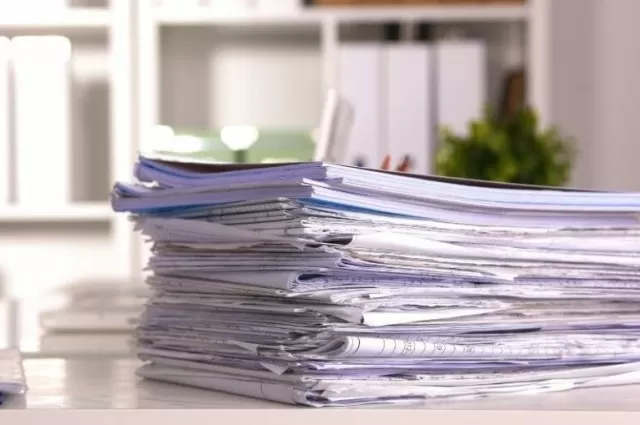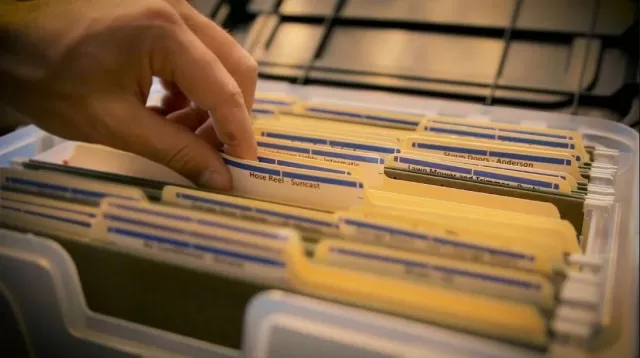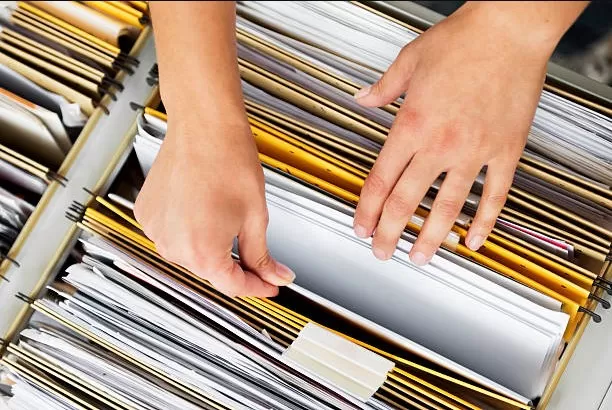From mail and receipts to school paperwork and tax documents, the constant influx of papers can create a disorganized mess
The accumulation of paperwork can quickly overwhelm your living or workspace.
From mail and receipts to school papers and tax documents, the constant influx of papers can create a disorganized mess. However, implementing an efficient file system to tackle this challenge is simpler than it seems.
We will guide you through the process of transforming chaotic stacks of papers into a well-organized file management system that is easy to maintain.
To begin, designate a dedicated area where you can gather all incoming papers in your home.
This central paper management center will serve as the starting point for sorting through mail, documents, receipts, invitations, and other paperwork. It’s essential to make informed decisions about each item’s purpose and determine the appropriate course of action.
Creating separate files or folders based on the urgency and timing of each task will help prioritize immediate actions, such as paying bills, while also providing a secure place for important documents like tax records. By establishing a systematic approach to paper management, you can avoid overwhelming pile-ups and address small tasks consistently each day.
Follow these tips to create a personalized file organization system that suits your needs.
Components for Organizing Files

To effectively organize your files, it’s essential to designate a specific area within your home as a paperwork processing center, which will serve as the central hub for your filing system.
Whether it’s in a Home Office, kitchen, dining room, or entryway, make sure you have enough space for the following items:
Central inbox: Choose a single location to gather all incoming paper, including mail, receipts, school papers, and flyers.
Having one consolidated stack is more manageable than scattering smaller stacks throughout the house.
Action file: Regularly go through your inbox to identify items that require immediate attention.
Sort them into a three-part “action file” based on their level of urgency. Keep this file visible and easily accessible to remind yourself to check it frequently.
Waste station: Set up a nearby area with a shredder, recycling bin, and trash can dispose of unwanted paper as soon as it enters your home, even before it reaches your inbox.
File cabinet: If space permits have a file cabinet dedicated to papers that need to be archived but don’t require immediate action.
If a file cabinet is not feasible, use an easily accessible box or folder for collecting papers that need filing. Transfer them to long-term storage every month.
Creating a File System for Important Papers

Follow these steps, provided by professional organizer Charlotte Steill, to establish a file system that simplifies the management of important paperwork in just a few minutes each day.
Set up an action file: Choose a three-part file container that suits your organizing style and available space.
Label the sections as “Do Now,” “Do Later,” and “Pending. ” Ensure the system you choose matches your filing preferences and allows for easy organization.
Sort your inbox: For each item in your inbox, determine the next action that needs to be taken and when.
Categorize the paperwork into “Do Now,” “Do Later,” or “Pending” based on their urgency and response requirements. Archive or reference papers should be stored separately in a filing cabinet or other suitable storage solution.
Maintain your action file: Treat your action file as a dynamic system that requires regular attention.
Sort papers from your inbox into the appropriate sections of the action file every day or two. Once a week, review the “Do Later” section and take necessary actions.
Monthly, transfer archive paperwork to long-term storage.
Filing Miscellaneous Papers

Prevent random paperwork from accumulating by employing these ideas for different types of paperwork::Articles to read: Keep a document envelope in your car or bag, or bookmark articles online for later reading.
Coupons and receipts: Use a coupon wallet with dividers to store coupons, regularly checking for expired ones. Inspiration and reference pages from magazines: Utilize an accordion file folder with labeled categories to organize and store these pages.
Instruction books and warranties: Keep them in the same room as the relevant item, using a magazine holder for multiple manuals and attaching the receipt and warranty card to the cover. Kids’ art and schoolwork: Store them in a lidded box on a convenient shelf, adding daily papers as you decide whether to keep them.
By implementing these strategies, you can establish an efficient filing system that keeps important papers organized, minimizes clutter, and reduces stress.
*The information is for reference only.